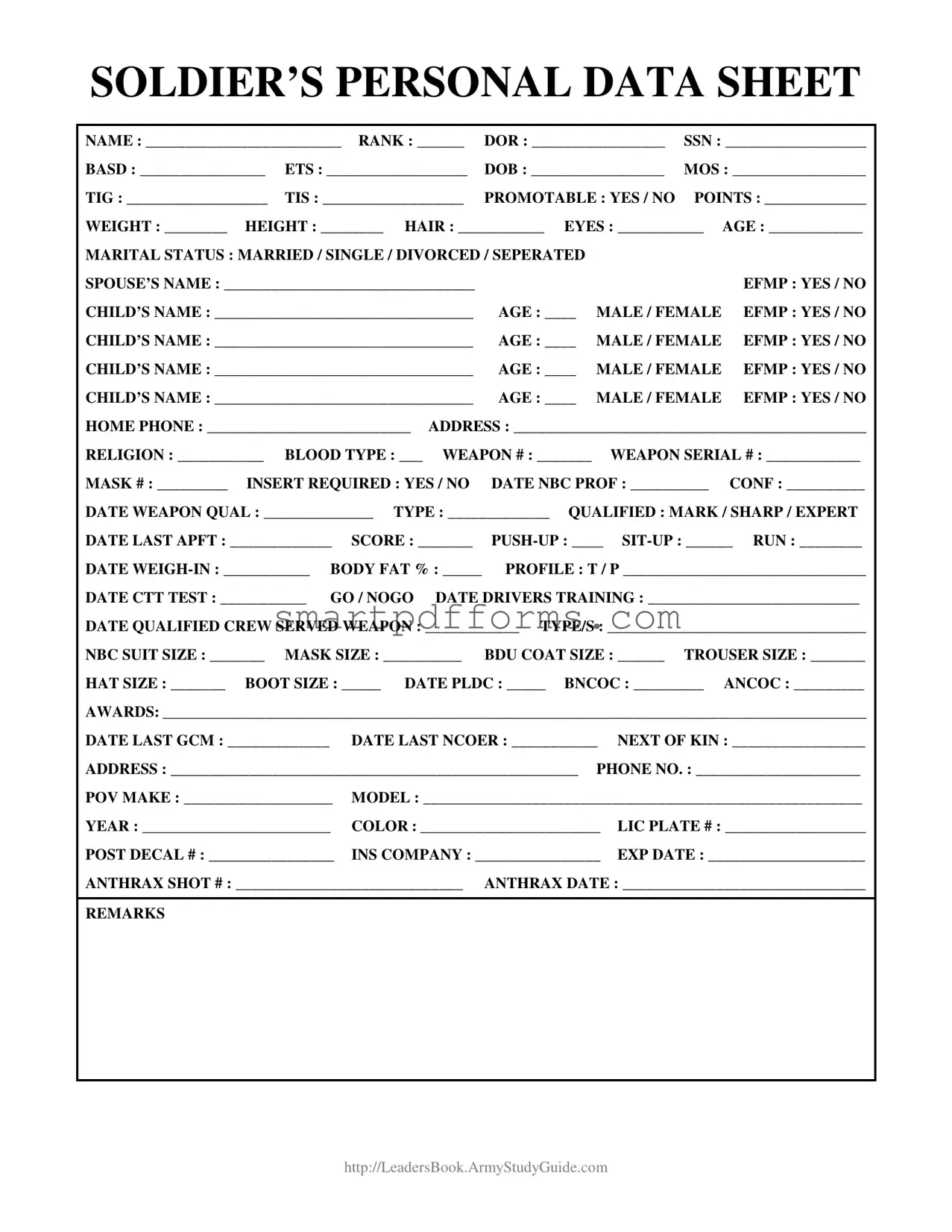In the realm of military documentation, the Personal Data Sheet form emerges as a critical tool, encapsulating comprehensive details of a soldier's professional and personal backdrop. This form, designed to paint a holistic picture of an individual’s military career and beyond, includes a wide array of fields. Information such as name, rank, date of rank (DOR), Social Security Number (SSN), Basic Active Service Date (BASD), End Term of Service (ETS), and Date of Birth (DOB) are just the starting blocks. It digs deeper, detailing Military Occupational Specialty (MOS), Time in Grade (TIG), and Time in Service (TIS), and even touches on the promotability status. Beyond professional metrics, the form delves into personal attributes like weight, height, hair and eye color, and marital status, along with details about dependents, to paint a thorough personal profile. It also takes inventory of the soldier's equipment, such as weapon and NBC (Nuclear, Biological, and Chemical) gear details, along with required qualifications such as weapon qualification, Army Physical Fitness Test (APFT) scores, and professional military education milestones. The inclusion of awards, next of kin information, and even vehicle data underscores the form’s comprehensiveness. This meticulous accumulation of data ensures that a soldier's records are up to date, facilitating smooth administrative and operational processes within the military's structured environment.

